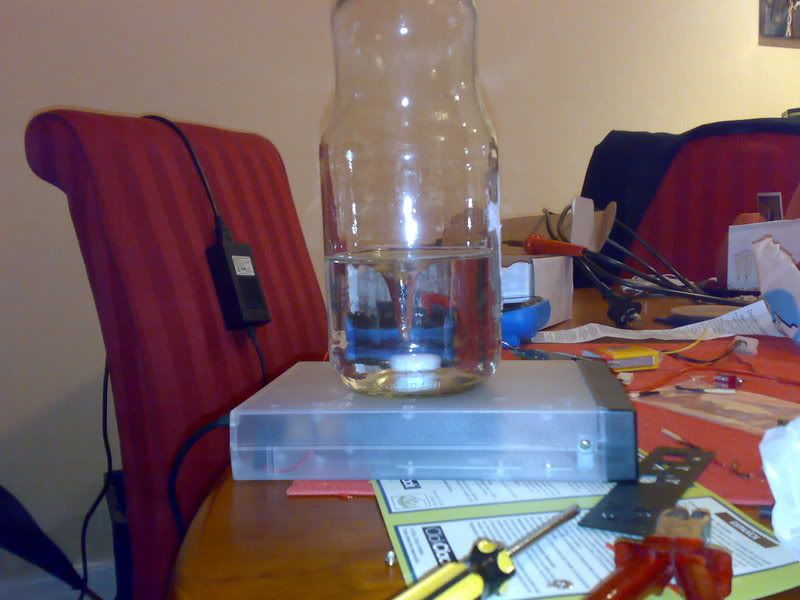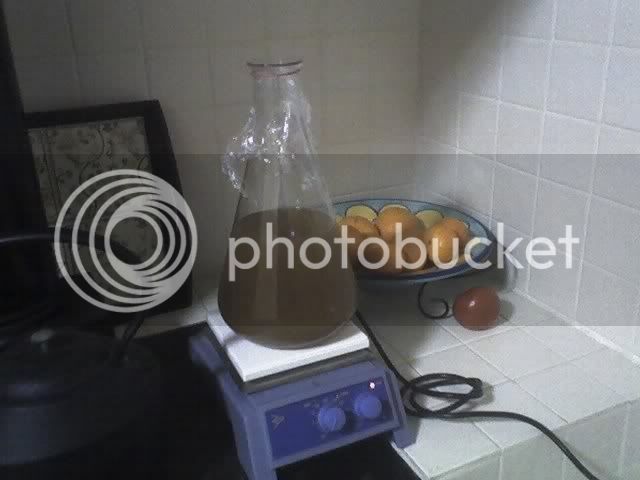Hey Barls,
I don't know how you can see the rpm of the stir-bar, but I certainly agree with razz in that it seems to slow down, and looks thicker as the culture multiplies. I had meant to take some photos showing various stages of a recent Coopers Pale yeast culture on the stir plate, but the camera was full of baby photos...
In a few words, it starts off murky dark brown (wort colour), and gradually becomes lighter as the yeast multiplies, eventually ending up looking like iced-coffee BigM. While this is all happening, I usually see a constant swirling of small bubbles that can leave a frothy layer, depending on the temperature and vigour of the stir. I think it's generally best to stir as vigorously as possible to encourage continuous mixing of oxygen into solution, encouraging yeast growth. Obviously these observations will depend on the quantity you pitch into the starter, and the type of yeast being pitched.
You know it's pretty much done when the small bubbles cease to be driven off, and the liquid is a nice light chocolate milkshake colour.
At this point I take it off the stir-plate, and put the Erlenmeyer flask in the fridge for 24 hours. This settles out the yeast, enabling you to pour off the "beer", and pitch the thick layer of white yeast into your brew (making sure you don't pitch the magnetic stir-bar in the process!)
The stir plate is probably the most valued piece of brewing equipment I have made

Hope it works for you too :beerbang:











